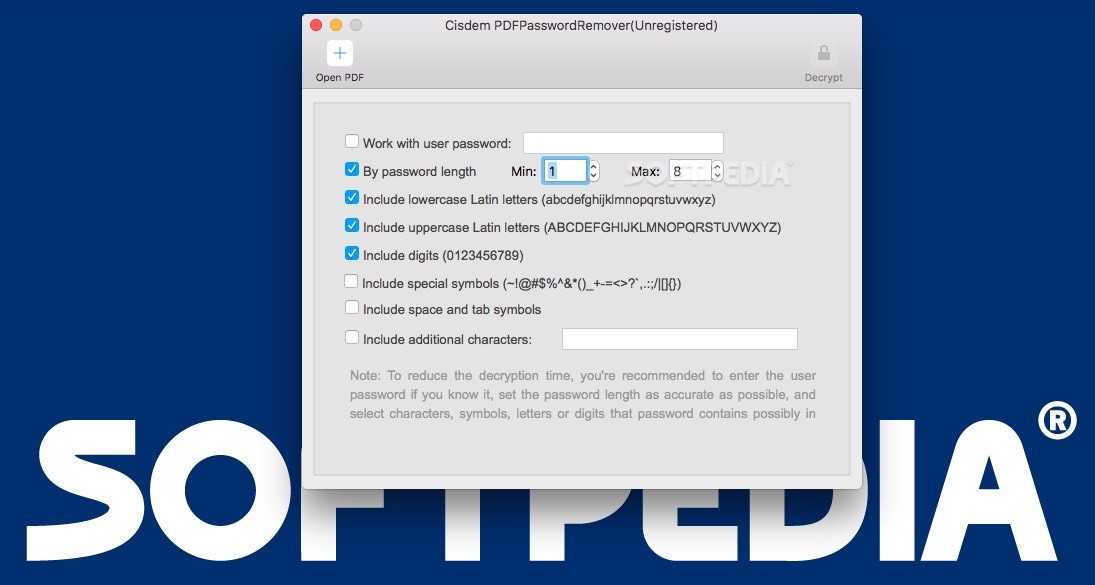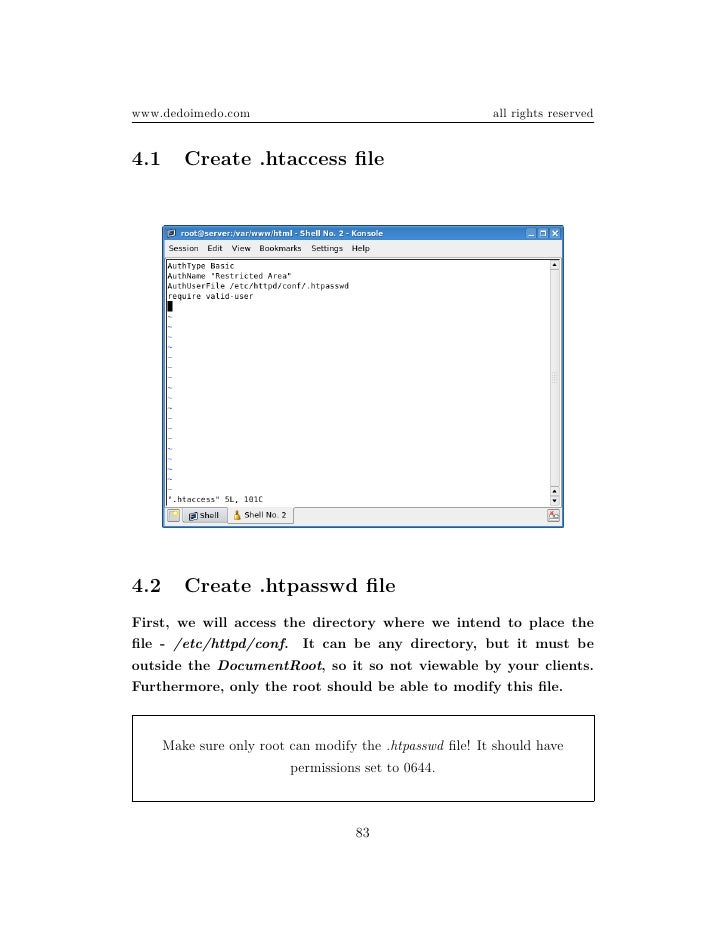
- How To Decrypt Htpasswd Password Cmd
- How To Decrypt Htpasswd Password Reset
- How To Decrypt Htpasswd Passwords
- How To View Encrypted Password
Note
Simply enter the url /members/.htpasswd, and you should receive a full userlist as well as all the encrypted passwords. Very silly indeed. If the file doesn’t exist, on a poorly configured server one merely has to read the.htaccess file to obtain the location. If it is below the “web-root”, then it would require a cgi-exploit of some. Create the Password File. We now have access to the htpasswd command. We can use this to create a password file that Apache can use to authenticate users. We will create a hidden file for this purpose called.htpasswd within our /etc/apache2 configuration directory. Re: decrypt password in the /etc/password file The passwords in /etc/passwd cannot be decrypted. They are 'HASHED' passwords. You can download crack from the internet and run against your encrypted password.
This plugin is part of the community.general collection (version 1.3.0).
To install it use: ansible-galaxycollectioninstallcommunity.general.
- ## Description htpasswd is a library for working with htpasswd user (only basic authorization) and group files. It supports CRYPT and MD5 encryption methods. It supports CRYPT and MD5 encryption methods.
- 4WebHelp’s online.htpasswd encryption tool; Alterlinks.htaccess password generator; htmlite’s htpasswd encryption page; Simply enter your desired username and password in one of these pages and submit the form. You’ll get back a string similar to the following: fred:p29cmnwl4a0et.
To use it in a playbook, specify: community.general.htpasswd.
Add and remove username/password entries in a password file using htpasswd.
This is used by web servers such as Apache and Nginx for basic authentication.
The below requirements are needed on the host that executes this module.
How To Decrypt Htpasswd Password Cmd

passlib>=1.6
| Parameter | Choices/Defaults | Comments |
|---|---|---|
| attributes string | The attributes the resulting file or directory should have. To get supported flags look at the man page for chattr on the target system. This string should contain the attributes in the same order as the one displayed by lsattr. The = operator is assumed as default, otherwise + or - operators need to be included in the string. | |
| create |
| Used with state=present. If specified, the file will be created if it does not already exist. If set to 'no', will fail if the file does not exist |
| crypt_scheme string | Default: | Encryption scheme to be used. As well as the four choices listed here, you can also use any other hash supported by passlib, such as md5_crypt and sha256_crypt, which are linux passwd hashes. If you do so the password file will not be compatible with Apache or Nginx Some of the available choices might be: apr_md5_crypt, des_crypt, ldap_sha1, plaintext |
| group string | Name of the group that should own the file/directory, as would be fed to chown. | |
| mode raw | The permissions the resulting file or directory should have. For those used to /usr/bin/chmod remember that modes are actually octal numbers. You must either add a leading zero so that Ansible's YAML parser knows it is an octal number (like 0644 or 01777) or quote it (like '644' or '1777') so Ansible receives a string and can do its own conversion from string into number.Giving Ansible a number without following one of these rules will end up with a decimal number which will have unexpected results. As of Ansible 1.8, the mode may be specified as a symbolic mode (for example, u+rwx or u=rw,g=r,o=r). | |
| name string / required | aliases: username | |
| owner string | Name of the user that should own the file/directory, as would be fed to chown. | |
| password string | Must be specified if user does not exist yet. | |
| path path / required | Path to the file that contains the usernames and passwords | |
| selevel | The level part of the SELinux file context. This is the MLS/MCS attribute, sometimes known as the range.When set to _default, it will use the level portion of the policy if available. | |
| serole string | When set to _default, it will use the role portion of the policy if available. | |
| setype string | When set to _default, it will use the type portion of the policy if available. | |
| seuser string | By default it uses the system policy, where applicable.When set to _default, it will use the user portion of the policy if available. | |
| state string |
| Whether the user entry should be present or not |
| unsafe_writes boolean |
| Influence when to use atomic operation to prevent data corruption or inconsistent reads from the target file. By default this module uses atomic operations to prevent data corruption or inconsistent reads from the target files, but sometimes systems are configured or just broken in ways that prevent this. One example is docker mounted files, which cannot be updated atomically from inside the container and can only be written in an unsafe manner. This option allows Ansible to fall back to unsafe methods of updating files when atomic operations fail (however, it doesn't force Ansible to perform unsafe writes). IMPORTANT! Unsafe writes are subject to race conditions and can lead to data corruption. |

Note
How To Decrypt Htpasswd Password Reset
This module depends on the passlib Python library, which needs to be installed on all target systems.
On Debian, Ubuntu, or Fedora: install python-passlib.
On RHEL or CentOS: Enable EPEL, then install python-passlib.
Authors¶

How To Decrypt Htpasswd Passwords
Ansible Core Team
How To View Encrypted Password
I am trying to password protect a directory, but I want the users to have to register on my site before they can access it. I would like to use CPanel's built in directory protection, but I am having a problem regarding the passwords.
I know how I can write the information to the htpasswd file, but I don't know how to encrypt the passwords when I write them to the file.
I guess what i'm asking for is what type of encryption is used on passwords when the htpasswd files are written. A code example as well as an explanation would be great, because I do not know exactly what 'salt' is, except that it pertains to encryption.
Any help would be greatly appreciated.